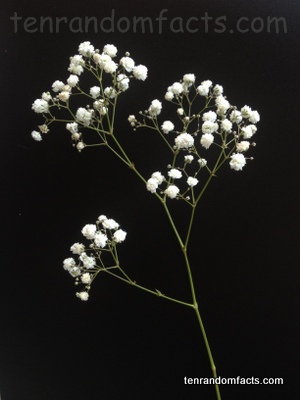Baby’s breath are innocent little flowers, aren’t they?
- Baby’s breath is a group of perennial and annual plants that produces flowers, and the genus contains approximately 35 species.
- Areas of Australia, Asia, Africa, Europe, and the Pacific are the native locations of baby’s breath.
- Baby’s breath has the scientific name Gypsophila and it is from the family Caryophyllaceae, the family of carnations.
- ‘Baby’s breath’ is also known as ‘soap root’, ‘chalk plant’ and ‘gyp’, and the plants are generally grown from seed.
- The scientific name of Baby’s breath – ‘Gypsophila’ – comes from the words ‘gypsos’ and ‘philos’, meaning ‘gypsum’ and ‘loving’ respectively in Greek.
- Baby’s breath generally grows to heights of 15 to 90 centimetres (6 to 35.5 inches), depending on the species, and in most cases they grow best in full sun.
- The five-petalled flowers of baby’s breath can be white, pink, or violet and they bloom during spring and summer months.
- The baby’s breath plant often grown for decorative purposes has the scientific name Gypsophila paniculata, and it is commonly used as a cut flower to give a delicate look in arrangements and bouquets.
- Some baby’s breath species have edible roots, and the plants and roots are also grown for and used as a medical ingredient.
- Although baby’s breath plants are commonly grown for commercial purposes, some areas have designated some species of the plant as an invasive weed.
Bibliography:
Gypsophila, 2015, Wikipedia, http://en.wikipedia.org/wiki/Gypsophila
How to Grow Gypsophila, 2015, Gardeners HQ, http://www.gardenershq.com/Gypsophilia-baby-breath.php







